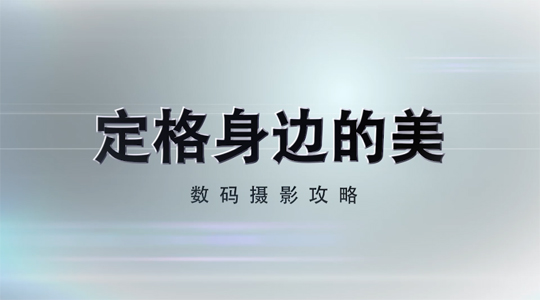
当前课程知识点:“一带一路”沿线国家跨文化商务交际 > 第七章 印度 > 7.3 印度商务礼仪 > 7.3 印度商务礼仪
返回《“一带一路”沿线国家跨文化商务交际》慕课在线视频课程列表
Now let’s move on to the fun part
The business etiquette
In this part
we are going to talk about the following
etiquettes that you should pay strong attention to
while communicating with Indian businesspeople
They are
Meeting etiquette
Emphasis on seriousness
Business dress code
Greeting manners
Dining manners
And Gift-giving manners
Meeting etiquette
For business meetings in India
it is wise to make arrangements with
your business contacts at least several days
in advance depending on how busy they are
Make sure to check the details of any meetings
and if unclear
contact your Indian business partner by call
or email for further information
Indian culture supplies a great amount of flexibility and
tolerance when dealing with people from outside of the country.
So if things are off the plan
you do not need to worry
You can notify and explain the situation to
your Indian business partners and they will understand you
What’s more
they are willing to offer some extra support too
This is a matter of informing all the affected parties
then you can cancel or rearrange your appointments.
One of the best ways to initiate a meeting is to contact
the personal assistant of senior executive
and ask for convenient meeting time
If you will be travelling to India from abroad
it is advisable to make appointments by email or by letter
at least one month and preferably two months in advance
The most suitable time to schedule meetings is late morning
around 11am or early afternoon
It’s wise to reconfirm your meeting the week before
and give your meeting parties a phone call again
that morning since it is common in India
for meetings to be canceled at the last minute
You should arrive at meetings on time since
Indians do appreciate punctuality and keeping promises
Since Indians may take longer time and
more visits to try to figure out the situation
first meet-ups are usually for introduction and agenda analysis
Typically
Indians choose to take their time
making important decisions.
Business meetings hold high importance and
are taken very seriously by Indians
which will be hereby further explained below
Indian executives from the top management prepare precise agendas,
which are usually imposed on strict censorship
Meetings in India always target for authoritative conclusions and
results instead of providing an opportunity
for abstraction or miscellaneous discussion
Emphasis on seriousness
When doing business with your Indian business partners
it’s important not to add too much of the humour gene
Doing business in India is a serious thing
so make sure you don’t have slapsticks
or even just liven up the atmosphere with light-hearted humour
or even just liven up the atmosphere with light-hearted humour
as it will definitely affect your business relationships
Sometimes Indians seem to be argumentative
emotional and expressive
only to a proper extent which is a normal part of their personality
and therefore shouldn’t be seen in a negative light
Business dress code
Different parts of India may embrace different dress codes
Generally for men
shirts and trousers are usually the common choice
while for women
saris are the typical outfit
Nowadays, it is common to find draped
elegant, modern clothing in business settings in India
Formal shirts, suits
ties and trousers are common business attire for men
Many businesses have their own uniforms
with company-style uniforms that look incorporated
with the whole company culture
The new generation startups are adopting a smart dress code
that is comfortable to wear
that is comfortable to wear
and gives a young-professional company image
Brands, designer suits and evening gowns
are quite popular among high officials.
Apart from the free choice of dress code for business occasions
women are advised to cover their heads and
shoulders when travelling in or near religious places
which is seen as a sign of respect
for culture and customs
Also, apart from the restrictions on clothing
if a woman is menstruating
she is not allowed to touch or enter any religious place
So, if you are a woman
invited by your Indian business partner for a guest
tour of their wonderful monuments and temples
be sure to remember to choose a suitable “date”
Greeting manners
in India gestures such as long handshakes
and shoulder taps between men don’t mean anything
rather than a friendly gesture
There are limits to physical contact between men and
women in the workplace which you should avoid
when greeting your Indian business partners
no cheek kisses or passionate hugs
unless you know how your Indian business partners like it
In any professional urban business context in India
a real firm handshake from a foreign client
(male or female) is highly recommended
However a “Namastey”-style greeting - greeting done
with your hands folded in front of your chest - to
your Indian business partner is always acceptable as an alternative
Dining manners
Since India is a country with rich religions
you should be aware of your Indian business
partners’ religious conventions when having dinner with them
If you are dining with your Indian business partners
who are Muslims or Hindus
do remember that Islam prohibits the eating of pork
and Hindus do not eat beef
When dining with Hindus
do not touch any food directly with your fingers
which is being served to others
and this is especially the case between men and women
according to Hinduism
this makes it impure
when dining with earnest Muslims
it is especially important for women not to
touch directly any food that is being served to men
this also makes it impure
Also
if you are right-handed
make sure to keep the spoon in your right hand
and put it down when switching to the fork if you need it
Never use your left hand for eating
because left hand is considered
tainted according to Indian religious teachings
If your dish requires you to eat with your hands
you should wash your hands before you sit down to eat
and also wash your hands again at the end of the meal
As mentioned above
you should use your right hand when picking up and eating food
never your left hand
Keep your left hand at your side
Do not place your left hand on the table
and do not pass food with your left hand
Normally in India
Banana-leaf food is usually eaten with your hands
These are vegetarian or meat curries
served with rice and sauce on a large banana leaf
If your Indian business partner invite
you to have such kind of food
the correct procedure of eating it would be
first pick some rice with your fingers (right hand)
then gently roll it between your index and middle fingers
and thumb (not in your palms) into a kind of self-sticking ball
dip it into the sauce on the banana leaf
mix it with a vegetable or a piece of chicken
then reach the whole thing into your mouth
Most of these hands-on banana-leaf
restaurants are Muslim or vegan
Gift-giving manners
When invited to your Indian business partner’s home
you should follow the Indian gift giving customs
nd bring the host/hostess a small gift of chocolates or flowers
If your gift needs wrapping
do not wrap it in white or black colours,
which are considered unlucky colours in India
Instead
use bright colors such as green, red, or yellow.
In India
gifts are not usually opened in the presence of the gift giver
Also, if your Indian business partner is Hindu
you should not give gifts made of leather
if he/she is Muslim
then you should not give gifts made of
pigskin or any alcoholic products
Items we considered gifts may not be available in India
so you can send your Indian business partners
other gifts such as electronic gadgets
computer disks bandages soup mix
and knives would be appreciated
chocolate, disposable razors, perfumes, toiletries
and household items such as plastic containers
can also be given as welcome gifts
-课程导语
-1.1 泰国的社会文化背景概况
-1. 2 泰国的核心文化价值观
-1.3 泰国商务礼仪
-1.4 泰国商务实践
-1.5 泰国商务中的跨文化交际陷阱
-1.6 Discussion
-1.7 Unit test
--1.7 Unit Test
-2.1 新加坡社会文化背景概况
-2.2 新加坡核心文化价值观
-2.3 新加坡商务礼仪
-2.4 新加坡商务实践
-2.5 新加坡商务中的跨文化交际陷阱
-2.6 Discussion
-2.7 Unit test
--2.7 Unit test
-3.1 马来西亚社会文化背景概况
-3.2 马来西亚核心文化价值观
-3.3 马来西亚商务礼仪
-3.4 马来西亚商务实践
-3.5 马来西亚商务语境中的跨文化交际陷阱
-3.6 Discussion
-3.7 Unit test
--3.7 Unit test
-4.1 哈萨克斯坦社会文化背景概况
-4.2 哈萨克斯坦核心文化价值观
-4.3 哈萨克斯坦商务礼仪
-4.4 哈萨克斯坦商务实践
-4.5 哈萨克斯坦商务语境中的跨文化交际陷阱
-4.6 Discussion
-4.7 Unit test
--4.7 Unit test
-5.1 沙特阿拉伯的社会文化背景概况
-5.2 沙特阿拉伯的核心文化价值观
-5.3 沙特阿拉伯商务礼仪
-5.4 沙特阿拉伯商务实践
-5.5 沙特阿拉伯商务语境中的跨文化交际陷阱
-5.6 Discussion
-5.7 Unit test
--5.7 Unit test
-6.1阿联酋的社会文化背景概况
-6.2阿联酋的核心文化价值观
-6.3阿联酋商务礼仪
-6.4阿联酋商务实践
-6.5阿联酋商务中的跨文化交际陷阱
-6.6 Discussion
-6.7 Unit test
--6.7 unit test
-7.1 印度的社会文化背景概况
-7.2 印度的核心文化价值观
-7.3 印度商务礼仪
-7.4 印度商务实践
-7.5 印度商务语境中的跨文化交际陷阱
-7.6 Discussion
-7.7 Unit test
--7.7 Unit test
-8.1 俄罗斯社会文化背景概况
-8.2 俄罗斯核心文化价值观
-8.3 俄罗斯商务礼仪
-8.4 俄罗斯商务实践
-8.5 俄罗斯商务中的跨文化交际陷阱
-8.6 Discussion
-8.7 Unit test
--8.7 Unit test
-9.1 波兰社会文化背景概况
-9.2 波兰核心文化价值观
-9.3 波兰商务礼仪
-9.4 波兰商务实践
-9.5 波兰商务中的跨文化交际陷阱
-9.6 Discussion
-9.7 Unit test
--9.7 Unit test
-10.1南非的社会文化背景概况
-10.2南非的核心文化价值观
-10.3南非商务礼仪
-10.4南非商务实践
-10.5南非商务中的跨文化交际陷阱
-10.6 Discussion
-10.7 Unit test
--10.7 Unit test
-期末考试





